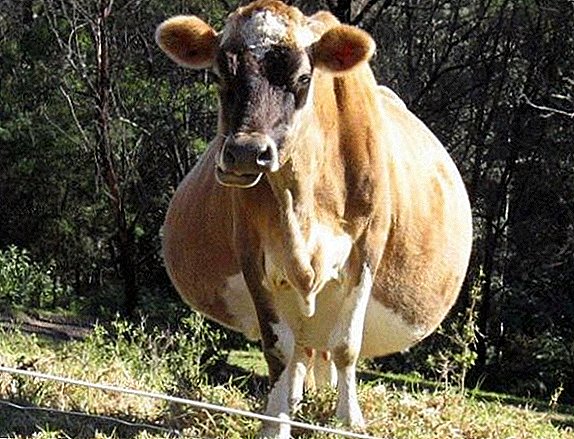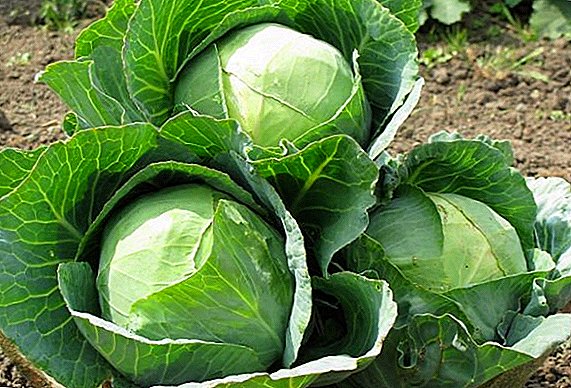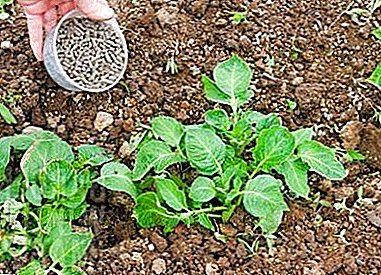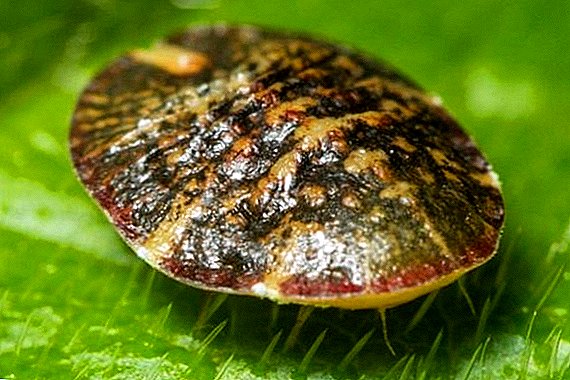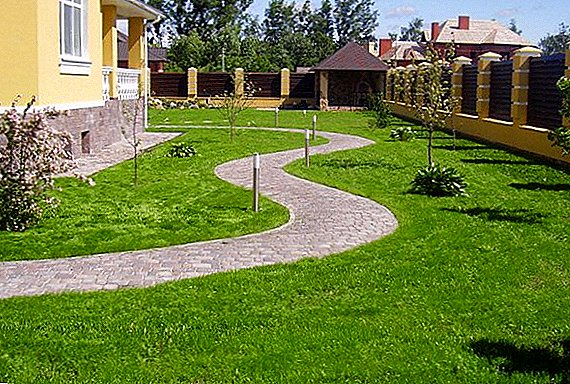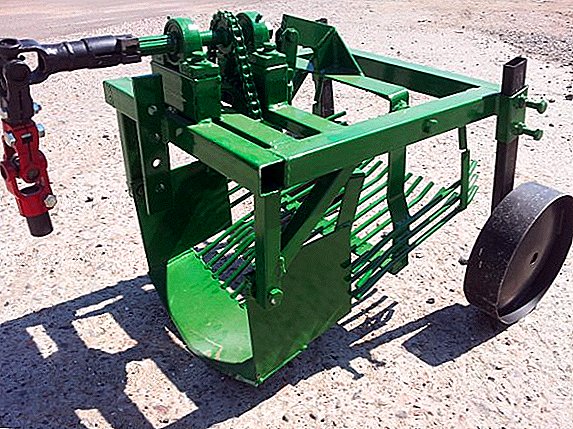 In order for healthy young animals to be hatched in the incubator, the device must be properly prepared for operation. In addition to warming up, setting the right indicators and the like, before using the device, it is necessary to do its disinfection. How and what to disinfect the incubator, described in this article.
In order for healthy young animals to be hatched in the incubator, the device must be properly prepared for operation. In addition to warming up, setting the right indicators and the like, before using the device, it is necessary to do its disinfection. How and what to disinfect the incubator, described in this article.
What is disinfection for?
Incubator disinfection is required before and after each incubation session, as well as for eggs before each laying.
After the chicks prickling inside the apparatus, fluff remains, remains of the shell, the liquid in which the embryo was formed, blood.
Incubator Disinfection: Video
All this must be thoroughly washed, because under the influence of high temperatures, these waste products provoke the growth of harmful microorganisms that will be dangerous to the health of the newly emerging generation.
In addition, previous embryos can be infected with any disease that will be transmitted to subsequent chicks without disinfecting the incubator. This can directly affect the survival rate of the next batch.
Thus, the disinfection procedure is one of the most important activities in the operation of the incubator and breeding.
Learn how to choose an incubator, as well as familiarize yourself with the main characteristics of such incubators as “Layer”, “Cinderella”, “Blitz”, “Stimulus-1000”, “Ideal hen”.
Disinfection methods
There are several methods of disinfection, in which various disinfectants are used. 
By type of antiseptic means there are 3 ways:
- Chemical.
- Physical.
- Biological.
There is also a systematization of the method of disinfection:
- Wet.
- Gas.
- Aerosol.
Disinfection is carried out after the inside of the device is thoroughly washed with warm soda solution and dried. Waste recovered from the incubator is incinerated.
Important! If organic residues are present in the incubator, disinfection will be ineffective.
Chloramine solution
This is one of the most common ways. Suitable for both industrial and household appliances, including self-made. Chloramine can be purchased at a pharmacy at an affordable price. 
Method of solution preparation: Dissolve 10 tablets in 1 liter of water. The treatment takes place by spraying with a spray. It is important to pour it into hard-to-reach places and areas where the concentration of residues was particularly high, as well as to thoroughly spray the trays.
The solution is left on the walls of the device for 3-4 hours. This will be enough for him to kill the microorganisms. After this period, the inside of the incubator will need to be washed with clean water. Washing is carried out with a cloth, hard-to-reach places are washed out with a brush.
After wet processing, the apparatus must stand for 24 hours in the open position in order to dry completely.
Vapor of formaldehyde
Another popular way for hatchery owners. 50 ml of 40% formaldehyde is mixed with 35 mg of potassium permanganate. The solution is poured into a container with a wide neck and put inside the incubation device. 
The temperature in the incubator is set to 38 ° C, the ventilation holes are closed. After 40 minutes the incubator is opened and aired during the day. To the smell evaporated faster, ammonia is sprayed inside the device.
Important! Formaldehyde is a toxic agent, so its use should protect the respiratory tract, eyes and hands.
Formaldehyde can be replaced by forgel or formidone.
Pairs of formalin
At the bottom of the device is placed a vessel of clay or enameled, with formalin solution (37% aqueous formaldehyde solution, 45 ml per 1 cubic meter), 30 ml of water and 25-30 g of potassium permanganate.
The vessel is placed inside the device. As in the previous case, the ventilation holes and the incubator door are closed. So that the disinfecting vapors are evenly distributed throughout the apparatus, a fan is turned on. The temperature is set at 37-38 ° C. 
After 2 hours of disinfection, the incubator is opened and aired for 24 hours.
Hydrogen peroxide vapor
By the above procedure, treatment with hydrogen peroxide vapors can be performed. Peroxide is poured into a container, placed on the floor of the incubator, the temperature is 37-38 ° C and the fan is turned on, the door and the ventilation holes are closed. After 2 hours, the door is opened, the device is ventilated. 
Ozonation method
Ozone is launched into the chamber (300-500 mg per 1 cubic meter). Set the temperature of 20-26 ° C, humidity - 50-80%. The duration of the disinfection process - 60 minutes 
UV treatment
Efficient and at the same time completely safe way. An ultraviolet lamp is placed in a cleaned incubator. Disinfection lasts 40 minutes. 
Did you know? In 1910 in the United States a record was set for eating eggs - a man ate 144 eggs at a time. The woman managed to eat 65 pieces in 6 minutes 40 seconds.
Ready-made drugs
The stores offer a wide range of products that are suitable for disinfecting incubation devices. They are presented in the form of aerosols and sprays.
Among them are popular:
- Clinafar;
- "Bromosept";
- Virkon;
- "Glutex";
- "Ecocide";
- "Khachonet";
- Tornax;
- "DM LED".
When disinfecting the incubator, Brovadez-plus can also be used.
These funds should be used in accordance with the instructions placed on the packaging. They are applied only on the internal surfaces of the incubator that have already been cleaned of residues. When applying should avoid contact with the engine, heating element, sensor.
Processing and disinfecting eggs before laying in the incubator
Although some poultry farmers question the need to disinfect eggs before laying, it is still necessary to do this procedure, because no matter how clean the shell is at first glance, fungal and microbial flora are always present on it.
How to clean and disinfect an incubator: video
It should be especially careful, since the impact on the shell can lead to leaching of its natural coating and premature destruction.
Did you know? In 1990, an attempt was made to incubate eggs in space. She became successful - managed to bring 60 quail out of 60 eggs. Now quails are considered to be the first birds born under weightless conditions.
For egg disinfection, as for the incubator itself, there are several ways.
Washing eggs
Concerning the washing of the shell among the poultry farmers are debating. Some believe that after this procedure hatchability of young cattle drops significantly. Others argue that it does not in any way affect the number of nestlings nested.
Learn more about whether to wash eggs before laying in the incubator.
It is up to you to make it or not, but you should not put eggs with contaminated shells in the incubator - with downy fluff, dirt, droppings. 
This will lead to the fact that under the influence of high temperature and humidity in the incubator, microorganisms harmful to the chicks will start to multiply en masse.
If the shell is very dirty, it should be cleaned with a brush before washing. If it is impossible to do this, dirty eggs should be discarded.
Formalin treatment
The shell is disinfected with practically the same means as the incubator, but by other means and in a different concentration. For processing prepare 0.5% formalin solution - this concentration can be achieved by diluting the substance with water in a ratio of 1 to 1. The liquid is heated to 27-30 ° C.
The eggs are laid in a net, immersed in a solution and kept there until the pollution is washed off. 
Important! Rubbing of the shell is strictly prohibited, since it can damage its natural layer and lead to premature destruction of the shell.
Processing formaldehyde vapors
This method will require a sealed chamber in which you can adjust the temperature and humidity.
Eggs and a vessel with a mixture are placed into it:
- 30 ml of formalin (40%);
- 20 ml of water;
- 20 g potassium permanganate.
This amount of mixture is enough for 1 cu. m
Initially formalin is mixed with water. Potassium is added at the last moment when the container has already been placed in the chamber. After its addition a violent reaction occurs, as a result of which disinfecting vapors are released. 
After potassium is added, the chamber must be immediately closed. Inhaling these fumes is dangerous for man.
The temperature in the chamber is 30-35 ° С and the humidity is 75-80%.
The procedure lasts 40 minutes. After this the chamber is opened, the eggs are removed and aired.
Quartz processing
Suitable for disinfecting eggs and a simpler, cheaper and safer method is quartz processing.
Carry it out as follows:
- Eggs are placed in a tray.
- At a distance of 80 cm from the tray set and include a source of mercury-quartz radiation.
- The irradiation procedure is carried out for 10 minutes.

Hydrogen peroxide treatment
For this method, acquire a 1% solution of hydrogen peroxide, or 1.5% with strong pollution of the shell. It is poured into a container and put eggs into it. Duration of the procedure - 2-5 minutes. After the end of sanitation, the liquid is drained, the eggs are watered with a fresh solution, removed and dried well.
Instead of hydrogen peroxide, you can treat with water with vinegar or a weak solution of potassium permanganate. 
Important! Only fully dried incubation material should be placed in the incubator.
Thus, the disinfection of the incubator before and after each incubation session - This is an important and necessary measure. It can be produced in various ways and means, and only after careful cleaning and washing the apparatus, since if organic residues are present inside, disinfection will be ineffective.
Decontamination and requires the eggshell. When using harmful substances such as formalin or formaldehyde, personal safety measures should be observed.
Feedback from network users





